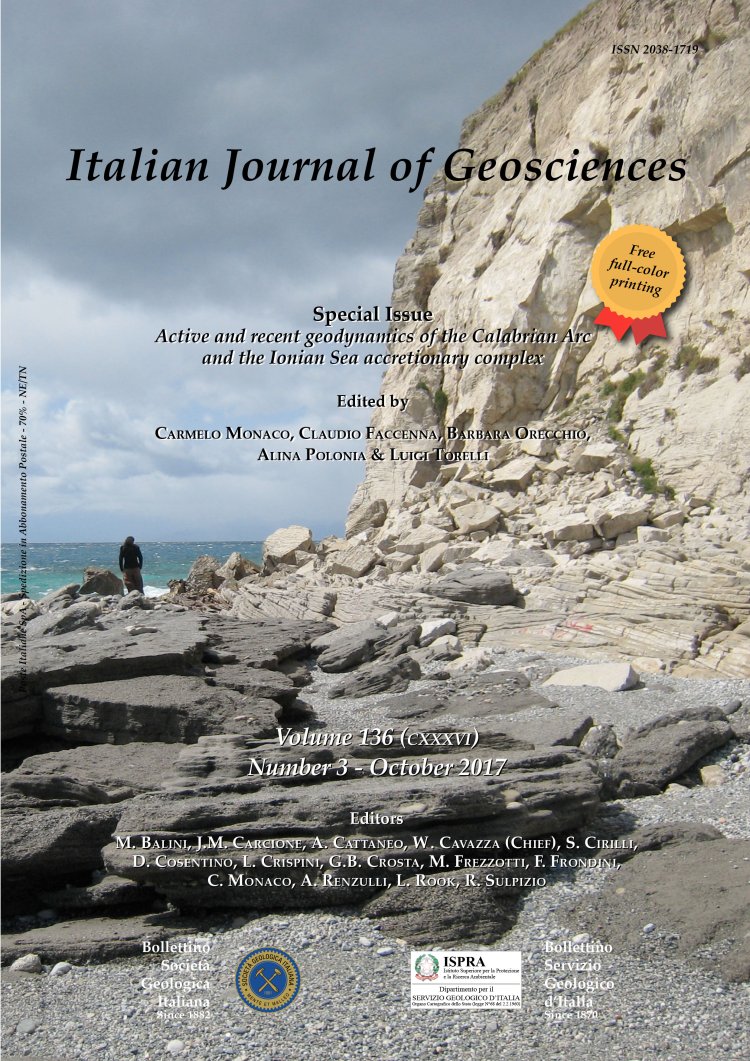
Structural architecture and active deformation pattern in the northern sector of the Aeolian-Tindari-Letojanni fault system (SE Tyrrhenian Sea-NE Sicily) from integrated analysis of field, marine geophysical, seismological and geodetic data
Fabrizio Cultrera (1), Giovanni Barreca (1,7), Luigi Ferranti (2,7), Carmelo Monaco (1,7), Fabrizio Pepe (3), Salvatore Passaro (4), Graziella Barberi (5), Valentina Bruno (5), Pierfrancesco Burrato (6), Mario Mattia (5), Carla Musumeci (5) & Luciano Scarfì (5)
(1) Dipartimento di Scienze Biologiche, Geologiche e Ambientali - Sezione di Scienze della Terra, Università di Catania. Corresponding author e-mail: fcultrera@unict.it.
(2) Dipartimento di Scienze della Terra, delle Risorse e dell'Ambiente, Università di Napoli "Federico II".
(3) Dipartimento di Scienze della Terra e del Mare, Università di Palermo.
(4) Istituto per l'Ambiente Marino Costiero, C.N.R. Napoli.
(5) Istituto Nazionale di Geofisica e Vulcanologia, Osservatorio etneo, Catania.
(6) Istituto Nazionale di Geofisica e Vulcanologia, Roma 1.
(7) CRUST - Centro Interuniversitario per l'Analisi Sismotettonica Tridimensionale con applicazioni territoriali.
Abstract
Keywords
Get Full Text